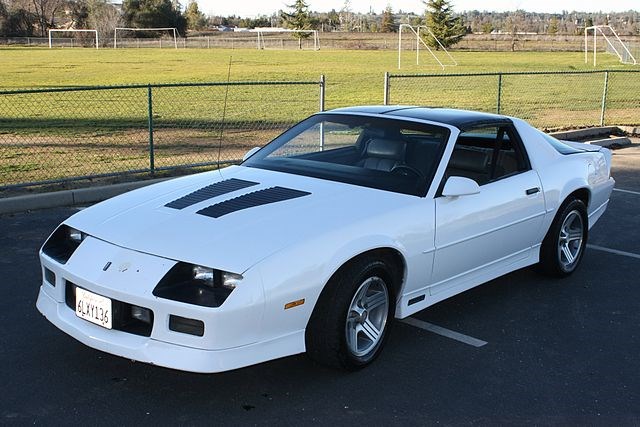A few weeks back, a half-dozen auctions held in Arizona saw the first real reaction of the classic car market to the changeover in the United States government.
Anchored by the big tent at Barrett-Jackson – one of the most well-known American auctions – the weekend’s results seemed to show continued confidence, with year-over-year results posting respectable gains. Nearly $260-million worth of machines traded hands, which you think would be good news for investors and speculators. As ever, there’s another story here.
So much has already been written about the rise of the so-called millennial generation that I hesitate to add to it. Every few weeks, we receive some half-baked missive on how young people have been ruined by participation trophies, and how none of them want to work for a living, and how when we tell them we had to leave school at the age of three to work in a factory and lived in a cardboard box in middle of the road, they don’t believe us.
I fully expect this sort of thing to continue until such time as millennials are complaining that their offspring don’t properly appreciate the subtleties of the poop emoji.
According to Hagerty, an insurance company that specializes in classic cars, 2017 is projected to be the year which sees the millennial classic car buyer surpass the baby boomer in total volume of sales. This piece of information will no doubt confuse you if you’ve been led to believe headlines like “Millennials Don’t Like Cars – Film At Eleven!” but it’s probably accurate.
When I was a kid, growing up in rural Chilliwack, getting a driver’s licence was a rite of passage or a ticket to escape or whatever other rose-hued term you want to employ. So it was for almost all of my graduating class, and pretty much everyone I went to university with.
And then we all grew up and bought crossovers. (Well, I didn’t, but I’m a weirdo.)
There’s no magic formula here: some people like cars, and some people really don’t like cars, and most people don’t think about things too much except to say “that’s a pretty decent stereo – does this come in blue?” Car enthusiasm is a niche now just as it has been for ages, and that means there’s a new generation of gearheads coming through. And, much like their music, they don’t necessarily like the same things you do.
The results from Barrett-Jackson, which is a pretty traditional muscle-cars-n’-hot-rods affair, show some unique trends, like greater interest in old pickup trucks. A Dodge Power Wagon and a well-restored Ford F-Series fetched decent prices, which is good news for anyone who likes seeing a solid workhorse cared for after it’s been put out to pasture. Good value means a better rate of preservation.
If you take a look at the market as a whole, the craziness of the air-cooled 911 market seems to have leveled off, and so too with pretty much any classic you’d recognize. Stuff like the Mercedes-Benz 300SL or Shelby GT350 haven’t peaked exactly, but they’re no longer climbing in value stratospherically.
Way up at the top of the range, the multi-million-dollar machines are still the usual suspects. Old Ferraris with race provenance are still the Holy Grail for the committed collector, and while you can mix in similar machinery like rare Jaguars and Mercedes, the prancing horse is still king.
However, analyzing the big ticket items is like tracking Rembrandt vs. Van Gogh. Where things get a little more interesting and fluid is at the more ordinary end of the market, where regular folks are buying their dream cars.
Until recently, that lineup probably resembled the parking lot from Fast Times At Ridgemont High. Big V-8s, heavy American muscle, probably a vintage VW or two. One need only look at how much a well-prepped Volkswagen microbus can fetch these days to get an idea of how far the market has been exploited.
However, when the millennial buyer starts looking to fill the hole in their garage, they’ve got a different frame of reference for that nostalgic backwards glance. Maybe it’s early days on the couch, setting lap times on one of the first Gran Turismo games. Perhaps it’s the Acura NSX you dreamed of while nursing your janky old Honda Civic to and from campus. Maybe it’s the original VW GTI you had to give up when the first kid arrived.
In short, the memorable rides for the millennials have shifted forward a generation, and while many people are still interested in greatest hits like the 1970 Chevelle SS, some of the more obscure machinery is going to fade from view a little.
So while the metal on display at a morning’s cars and coffee might change, the essential elements won’t. Expect more classic Japanese machines to start being preserved, as well as formerly unloved ‘80s muscle like the Fox-body Mustang or IROC-Z. Look for grey-market rarities both left- and right-hand drive to become more prevalent, and expect fun stuff like old Toyota 4Runners and Ford Broncos to come out of the woods and get shined back up.
The auctions show that, despite uncertainty in politics, people are still willing to take a flyer on the car of their dreams. Perhaps, now more than ever, they can use the escape.
Brendan McAleer is a freelance writer and automotive enthusiast. If you have a suggestion for a column, or would be interested in having your car club featured, please contact him at [email protected]. Follow Brendan on Twitter: @brendan_mcaleer.



